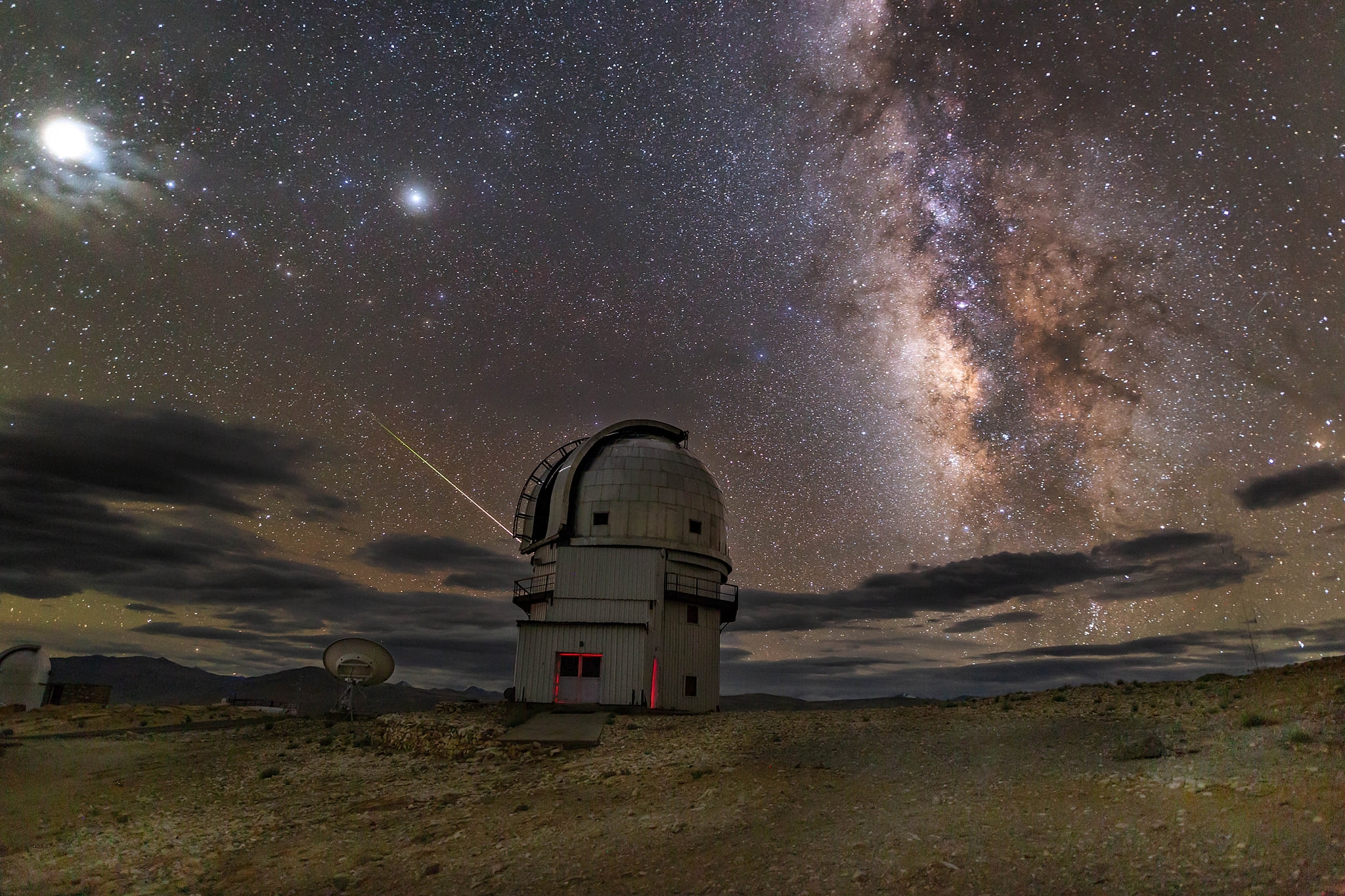Science
Indian Stargazers’ Perseid Meteor Shower Video Shared On Esteemed NASA Photo Service
- Two Indian astrophotographers captured the Perseid meteor shower from Hanle, Ladakh, in August this year.
- They turned their time-lapse captures into a video that featured as NASA “Astronomy Picture of the Day” on 28 September.

'Perseids meet Himalayan Chandra Telescope!' Dorje Angchuk took this picture on 7 July 2021 at the Indian Astronomical Observatory, Hanle. (Photo: Dorje Angchuk)
High up in the Himalayan mountains is not a bad place from which to get a good look at the skies. And if the spectacular sights happen to be recorded by an expert hand or two, awe-inspiring imagery is bound to be captured on most days, or nights, depending on the time of the observation.
At Hanle, the site of the Indian Astronomical Observatory in Ladakh, Indian astrophotographers Vikas Chander and Dorje Angchuk captured the Perseid meteor shower in August 2021.
The resulting footage, edited by Chander, was picked to be featured as the “Astronomy Picture of the Day” on 28 September.
Astronomy Picture of the Day, abbreviated as APOD, is based upon work supported by the United States space agency National Aeronautics and Space Administration (NASA). It is a service of the Astrophysics Science Division at NASA’s Goddard Space Flight Center and Michigan Technological University.
The creators of this very popular and possibly largest archive of astronomy images on the web are professional astronomers Robert Nemiroff and Jerry Bonnell. They have kept this digital service going since 1995.
Nemiroff is a professor of physics at Michigan Technological University and Bonnell is a scientist at NASA’s Goddard Space Flight Center. Both of them were previously colleagues at the NASA centre.
A new image is featured and spotlighted on the website every day, accompanied by a textual description by a professional astronomer. On 28 September, the highlight was ‘Night of the Perseids’ by Chander and Angchuk.
The video moves from night to day and across time-lapse recordings of the meteor shower captured over five nights during peak shower at Hanle, which is about 4,500 metres above mean sea level, in Ladakh.
“Hanle was chosen as the location for this timelapse video as this is possibly the only location in India devoid of major cloud cover in the monsoonal month of August. I am thankful to the Indian Institute of Astrophysics for providing access to their observatory,” Chander wrote in a Facebook post.
Whereas Chander’s work has featured previously on APOD, ‘Night of the Perseids’ is Angchuk’s debut on the esteemed astronomy photo service.
Perseids are among the more prized meteor showers of the year. A meteor shower is simply the interaction between particles or debris left over from comets or asteroids and the Earth’s atmosphere.
Once these bits slam into the atmosphere, they disintegrate to leave behind streaks that are a thrill to see and behold for stargazers. Pre-dawn hours are the best time to experience the shower.
The Perseid meteor shower is associated with the large comet 109P/Swift-Tuttle, which goes around the Sun once every 133 years. The shower is quite prolific, as one can see 50-100 meteors per hour. The meteors appear to those watching as arriving from the Constellation Perseus. Hence the name "Perseids".
Besides the magnificent meteors sprinkled across a breathtaking starry night sky, Chander and Angchuk’s video features the Himalayan Chandra Telescope and the high-altitude gamma-ray array telescope (HAGAR), both of which are part of the Indian Astronomical Observatory — one of the highest observatory sites in the world and India’s northernmost astronomy outpost.
Angchuk is the engineer-in-charge of this Indian Institute of Astrophysics facility in Ladakh. For his work, he was recently inducted into the International Astronomical Union as an honorary member, India's only entry in the list of 20.
Also Read:
Support Swarajya's 50 Ground Reports Project & Sponsor A Story
Every general election Swarajya does a 50 ground reports project.
Aimed only at serious readers and those who appreciate the nuances of political undercurrents, the project provides a sense of India's electoral landscape. As you know, these reports are produced after considerable investment of travel, time and effort on the ground.
This time too we've kicked off the project in style and have covered over 30 constituencies already. If you're someone who appreciates such work and have enjoyed our coverage please consider sponsoring a ground report for just Rs 2999 to Rs 19,999 - it goes a long way in helping us produce more quality reportage.
You can also back this project by becoming a subscriber for as little as Rs 999 - so do click on this links and choose a plan that suits you and back us.
Click below to contribute.
Latest